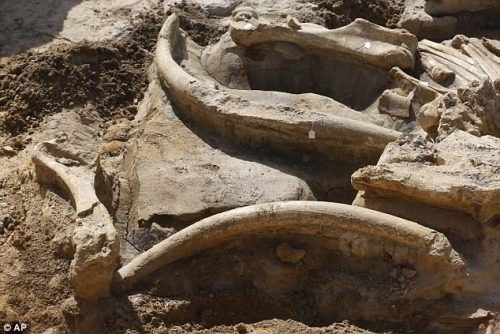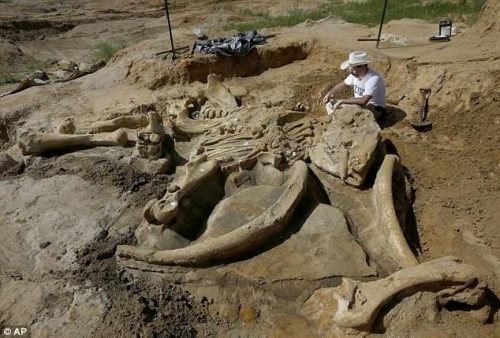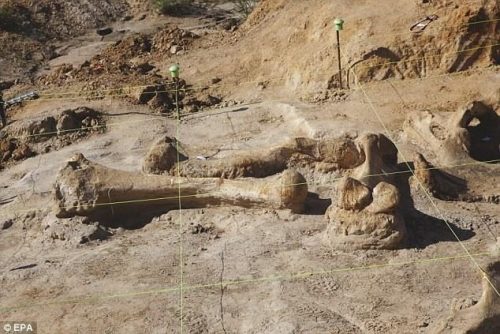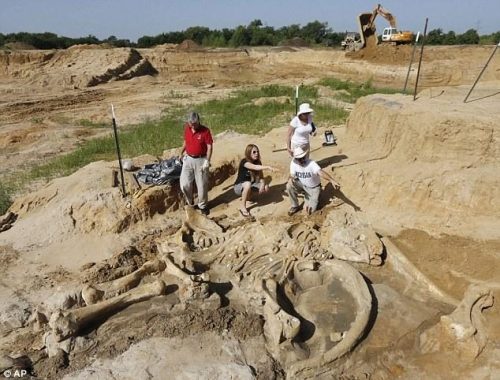
In the vast and diverse landscape of Texas, a remarkable discovery has unfolded – a 60,000-year-old mammoth fossil found on a ranch. This astonishing find not only captures the imaginations of paleontologists and archaeologists but also provides a unique window into the paleoecological history of the region. In this article, we delve into the paleoecological significance of this mammoth fossil and the valuable insights it offers into the ancient Texan ecosystem.
The Mammoth Discovery
The mammoth fossil discovery in Texas has sent shockwaves through the scientific community. The specimen, remarkably intact for its age, promises to yield a wealth of information about the environment in which it once roamed. But why is this discovery so significant from a paleoecological standpoint?
1. Paleoecology Unveiled:
Paleoecology is the study of past ecosystems and their dynamics. It helps us understand how ancient plants and animals interacted, adapted, and influenced each other within their environments. The mammoth fossil is a time capsule, preserving clues that can unlock the secrets of Texas’ distant past.
2. Climate Clues:
One of the most intriguing aspects of this find is its potential to provide data on ancient climates. By analyzing the isotopic composition of the mammoth’s teeth and bones, researchers can gain insights into the temperatures and precipitation levels of the region during the mammoth’s lifetime. This data can contribute to our understanding of historical climate change in Texas.

3. Dietary Insights:
The mammoth’s diet is another area of interest. Studying the remains of plants found within the mammoth’s digestive tract can reveal what types of vegetation were available at the time. This information helps reconstruct the paleobotany of the area, shedding light on the vegetation and ecological niches present in ancient Texas.
4. Interactions with Other Species:
The mammoth did not exist in isolation. It coexisted with a variety of other species, including predators and smaller herbivores. By examining the fossil record and geological context, researchers can piece together the ancient food webs and predator-prey relationships that characterized the Texan ecosystem.
5. Environmental Context:
Understanding the mammoth’s environment is crucial. Was it part of a grassland, forest, or wetland ecosystem? The sediment layers and geological features surrounding the fossil can provide valuable information about the landscape it inhabited.
6. Human Interaction:
This discovery might also shed light on the interactions between ancient humans and mammoths. Were mammoths hunted by early Texan inhabitants? The presence of stone tools or evidence of butchering can provide valuable anthropological insights.

7. Conservation Implications:
The mammoth fossil’s discovery emphasizes the importance of preserving and protecting natural landscapes. It reminds us that our actions today have consequences for future generations’ understanding of the past.
Conclusion
The 60,000-year-old mammoth fossil found on a Texas ranch offers a priceless opportunity to explore the paleoecological history of the region. Through careful analysis of the fossil and its context, researchers can reconstruct ancient climates, ecosystems, and interactions between species. This discovery not only enriches our knowledge of Texas’ past but also underscores the need for continued conservation efforts to safeguard our natural heritage.
In the coming years, as scientists meticulously study this remarkable find, we can expect to uncover a treasure trove of insights that will reshape our understanding of Texas’ paleoecological past and the role mammoths played in shaping the landscape. The ancient mammoth is a testament to the enduring mysteries of our planet’s history, waiting to be unlocked one fossil at a time.







